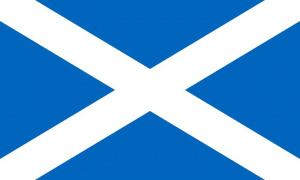Language/Scottish-gaelic/Grammar/Describing-with-Adjectives
| ◀️ Meals and Beverages — Previous Lesson | Next Lesson — Using Adverbs ▶️ |
Introduction[edit | edit source]
Welcome to the "Complete 0 to A1 Scottish Gaelic Course". In this lesson, we will focus on describing with adjectives in order to provide a more nuanced understanding of the Scottish Gaelic language. Adjectives are words that describe or modify nouns, and while they may seem simple, they often carry deep cultural connotations and lend insight into the way people think about the world.
In the following sections, we will discuss the functions of adjectives, their placement, and the rules governing their usage in Scottish Gaelic.
Functions of Adjectives[edit | edit source]
Adjectives play a critical role in describing the world around us. They give us information about the qualities of objects, people, and places, and they can be used to invoke a sense of emotion or atmosphere. In Scottish Gaelic, adjectives can be used to describe both physical and abstract characteristics, such as color, size, texture, personality, or emotions.
Here are some examples:
- ùr (fresh) - used to describe fresh produce, new beginnings, or a fresh smell
- leat (small) - used to describe small objects, people, or portions
- aoibhinn (beautiful) - used to describe beautiful landscapes, people, or works of art
- fuaimneach (noisy) - used to describe a noisy environment, such as a crowded room or a loud party
- toilichte (happy) - used to describe a happy person, situation, or atmosphere
As shown in the previous examples, adjectives can help us build a richer and more detailed picture of the world around us.
Adjective Placement and Agreement[edit | edit source]
In Scottish Gaelic, adjectives usually come after the noun they describe. For example, instead of saying "the green tree", we would say "an crann uaine" (lit. "the tree green"). However, in some cases, adjectives can also come before the noun, particularly when they are used to create a specific effect or emphasis.
When using adjectives in Scottish Gaelic, it's important to ensure that they agree in gender, number, and case with the noun they modify. This means that the ending of the adjective may change, depending on the gender, number, and case of the noun it is describing.
Gaelic has two genders: masculine and feminine. Nouns referring to males or male animals are masculine, while nouns referring to females or female animals are feminine. In addition, some inanimate objects are also categorized as masculine or feminine, often arbitrarily.
Here are some examples of adjective agreement:
| Scottish Gaelic | Pronunciation | English |
|---|---|---|
| an t-uisge fuar | uhn tish-guh foo-ur | the cold water (m.) |
| an caora bàn | uhn kair-uh bahn | the white sheep (f.) |
| na lusan glas | nuh loo-sun glas | the green herbs (m.) |
| na h-eich òr | nuh heykh orr | the golden horses (f.) |
As shown above, adjectives are affected by the gender of the noun they are describing. Masculine nouns take the article "an" before the noun, while feminine plural nouns take the article "na".
In addition to gender agreement, adjectives also have to agree with the number and case of the noun they modify. For example, if the noun is in the genitive case, the adjective will also have to be in the genitive case.
Common Adjectives in Scottish Gaelic[edit | edit source]
Scottish Gaelic has a wide range of adjectives that describe various qualities and characteristics. Here are some of the most common adjectives and their meanings:
- ùr - fresh, new
- blàth - blooming, blossoming
- glas - green, blue, gray
- gorm - blue, green
- bàn - white
- òr - golden, yellow
- ruadh - red, ginger
- ciar - dark, gloomy
- geal - bright, clear, white
- leathann - broad, wide
- caol - narrow, slender
- òg - young
- sàmhach - quiet, calm
- fuaimneach - noisy, loud
- deas - nice, pleasant, kind
- uabhasach - awful, terrible
- brèagha - beautiful, pretty
- ioma-fhillteach - complicated, complex
- gleann - deep, profound, meaningful
- creagach - rocky
Conclusion[edit | edit source]
In this lesson, we have covered the basics of describing with adjectives in Scottish Gaelic. Adjectives are crucial in providing a more detailed and nuanced picture of the world around us, and it's important to understand their functions, placement, and agreement rules. We have also provided a list of common adjectives that you can use to practice your Scottish Gaelic skills.
Remember to practice regularly and immerse yourself in the language as much as you can. The more exposure you have to the language, the more natural it will become.
Other Lessons[edit | edit source]
- Using Adverbs
- Using Prepositions
- How to Use Be
- Negation
- Conditional Mood
- Future Tense
- Questions
- Forming Questions
- Personal pronouns
| ◀️ Meals and Beverages — Previous Lesson | Next Lesson — Using Adverbs ▶️ |

